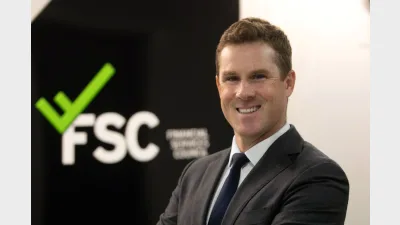Group insurers look ahead


With concerns over profitability, sustainability and negative claims impacts providing a distracting backdrop, 2014 proved a challenging year for group insurance providers.
Yet in the face of such challenges, the industry has still enjoyed significant achievement and for Jim Minto, Group Chief Executive Officer and Managing Director of TAL, Australian superannuation funds have been key beneficiaries.
"So clearly the headline stories for the group insurance market were very adverse during the year and there were a lot of concerns around how insurers would handle such those market conditions," he said. "But in the background, we knew that in the last two years, there has been a massive amount of effort going on, particularly with respect to building sustainability."
"And we were very pleased with the outcomes across the year," Minto continued. "There's more work to be done but I think that when one looks at life insurance more broadly and the strategic challenge that group life insurance represents, we've actually been able to work with our superannuation partners to make a lot of changes a lot more quickly than we might have originally thought possible."
"And that wasn't just around pricing because it had a lot to do with the sustainability of our offers as well."
Similarly, Tim Tez, Chief Product & Marketing Officer for MetLife in Australia, said that while 2014 had undoubtedly proven a challenging year for the life insurance industry as a whole, MetLife had nonetheless made a number of notable achievements.
"So it was a good year for us really," he said. "Including our partnership with Steadfast to provide tailored SME (small and medium enterprise) life insurance solutions to their client base, we partnered with Coles and launched Coles Life Insurance."
"We also launched a new corporate insurance product and bolstered our resources and capability to tailor it for that market," Tez continued. "And finally, we retained all of our superannuation fund partners."
"And all this activity resulted in us growing by over 100 per cent in 2014 so it was clearly a strong year in the context of what was a challenging year for the industry as a whole."
Yet for Minto, insurance provision in 2014 was most pleasing due the benefits its delivery continued to provide.
"So the thing we're most delighted about is that the group channel really does delivery core life insurance benefits to most working Australians," he said. "Its seen as very convenient and very valuable and I think that's one of the huge trends in Australian life insurance over the last 10 years, that sort of growth and recognition."
"Yes, we've had our pricing claims crisis but we've worked our way through it, the market has progressed and you continue to see quality products being produced."
However despite some of the pricing and claims challenges referred to by both Minto and Tez, the reality is that group insurance is now about much more than price per unit of cover. Indeed for Craig Harrison, General Manager Wholesale Life for CommInsure, innovation beyond such bounds has become paramount.
"I think there's been a realisation and a general acceptance that insurance is far more than just product and price over the last few years," he said. "But for CommInsure, innovation is driven by the needs of our clients."
"We support and partner with super funds to deliver quality insurance products and service to their members," Harrison continued. "This may be in the form of supporting a super fund to align their group insurance offering to member needs or building a technology platform to support super funds with their insurance obligations or even building an online tool to support members with their insurance needs."
"We're also investing in our claims management capability including early claims intervention, case management and specialised rehabilitation support to members."
Expressing a similar view, Minto said that for individual trustees, the design of a member protection offer and how that was structured for different membership groups would always be extremely important.
"Its a critical element of a fund's strategy and on the back of the increasing amount of time and effort being spent on insurance, its clear that trustees recognise that," he said. "So I'd say insurance is evolving very very rapidly, especially at the larger end."
Tez said that MetLife spent a lot of time thinking about benefit design, early intervention, and rehabilitation from a claims perspective.
"In 2014, we assembled a team of dedicated early intervention rehab experts and we are looking to roll those services out even more in 2015," he said. "But further innovation is a key for us in this channel."
"Research has shown us that Australians are struggling with the complexity of insurance products, so we're working with our clients to make insurance products more transparent, less complex and ultimately, more customer centric."
Of course as Australia's superannuation and insurance industries continue to grapple with customer engagement, Tez's comments are important to note. It is, after all, difficult to make products customer centric if those customers do not have a solid understanding of what they are and are not insured for.
Thus for Harrison, education continues to be an important topic of conversation within the group insurance industry.
"The industry as a whole has a major role to play in lifting financial education standards for investors," he said. "In our experience, super funds are heavily focused on member engagement strategies, improved and more tailored communication, the delivery of advice and other member support mechanisms."
"That provides an important foundation in addressing the financial literacy of members," Harrison continued. "And so we see our role as partnering with super funds, offering products and services that align with their members' needs and, more broadly, focusing on educating members about the value that insurance can provide."
According to Tez, because insurance is such a low engagement category, it was critical that fund members were educated as to the value of insurance.
"We've done some internal research here that showed that 50 per cent of Australians aren'tt even aware that they've got insurance," he said. "But of that 50 per cent, how many of them actually know what they're covered for and whether the level of cover they've got is right?"
"So what are we doing about it?" Tez asked rhetorically. "We're partnering with a number of funds to develop financial literacy and awareness programs to help address this important issue."
"It's wrapped up as part of the whole education piece but we need to communicate more and help our funds to communicate with their members about the importance of their insurance offers, thinking about whether it's the right cover, the right level of cover, have they got the appropriate cover for a rainy day."
Alternatively, Minto said that while members' understanding and engagement with insurance was not yet what super funds or insurance providers might wish it to be, it was much less of an issue in 2015 as compared to 5 years ago.
"If there is one thing that we've seen in the group area with superannuation funds, its that members have engaged a lot more," he said. "They could engage even more certainly but I don't think there's any doubt that the self-motivated ones have acted very proactively on their insurance."
"They're buying top health cover within super because its convenient to do so, exercising choice to ensure that they're comfortable with their amount of cover and so on," Minto continued. "It's front and centre for many members - whenever a major statement goes out or an event notice is delivered, there is a huge surge in calls to contact centres about insurance."
"So yes, we need to increase members' understanding but that's in large part because insurance is playing a bigger and bigger part in super from the member's perspective."
Yet as much as member behaviour dictates the provision of group insurance, so too does industry reform. Clearly, MySuper has been at the forefront of that reform and while many predicted that insurance would be a key point of differentiation within funds' product development efforts, Harrison said that insurance's role was still a work in progress.
"From my perspective, this is an area which is still evolving," he said. "On the one hand, insurance is one of only a few areas where MySuper products can differentiate themselves from others."
"However, there is a limit to how much differentiation you can achieve with insurance within superannuation," Harrison explained. "With insurance, it's about the delivery of a well-designed and meaningful product."
"And you have to couple that with a total quality service model that supports a super fund's member insurance strategy, business and operational needs and objectives."
Yet for Minto, if someone was trying to compare two or more super funds, it would always be difficult for them to do so on the basis of investment returns.
"Its difficult because the question becomes what period and what numbers do you look at," he said. "It's confusing and so I think insurance can provide that point of differentiation that's easier to understand in terms of both level of cover and design."
"Its been a key differentiator and it continues to be a key differentiator as funds continue to enhance their insurance offers," Minto continued. "It's one of those things that people can look at and say ‘this is exactly what it's going to do' whereas you simply can't do that with investment returns."
"With insurance, you can see the design straight away and form a view about it."
Balancing the perspectives of Harrison and Minto, Tez said that no matter how you looked at it, insurance continued to be a key issue for super funds and their trustees.
"What I would say is that insurance strategy continues to be a key issue for superannuation funds and trustees," he said. "As the industry has experienced rate increases, we've worked with our superannuation partners to build new benefit designs and structures, which are ultimately more sustainable."
"And helping our clients to manage their insurance offer in 2015 remains a key focus for our business," Tez added. "It continues to be a critical part of a superannuation funds' offer and it's important that we provide tailored solutions to their member base and the best level of service possible."
So as January draws to a close and the business of superannuation and group insurance provision starts to ramp up, it seems clear that partnerships are key.
Products must meet members' needs and yet also be sustainable and according to Minto, that is a focus both industries share.
"Group insurance is an enormously important area for TAL and so we continue to invest in technology, in our partnerships, and in providing expert advice," he said. "We want to make sure that we keep our lifting standards, that we continue developing innovative product and that we continue to be very strong partners for our client funds."
Echoing Minto's sentiments, Tez said that by and large, the plans of group insurance providers were well aligned with those of super funds.
"So at MetLife, we want to help our funds have sustainable and differentiated insurance offers that add value to their member proposition," he said. "We want to continue to build out that capability for our funds and ourselves but we also want to work on our digital and member engagement piece and to help our funds in having those difficult insurance conversations."
"But above all, we want to deliver an excellent service, to deliver absolutely the fairest and best possible outcomes for our claimants from both a rehabilitation and mental health perspective."
Recommended for you
The insurance company has joined this year’s awards as a principal partner.
The $135 billion fund has transitioned away from TAL Life Insurance following an “extensive tender process”.
The $80 billion fund is facing legal action over allegedly signing up new members to income protection insurance by default without active member consent.
In a Senate submission, the Financial Services Council has once again called for further clarification that the government will assess the consumer outcomes of group insurance against the enshrined objective of superannuation.













